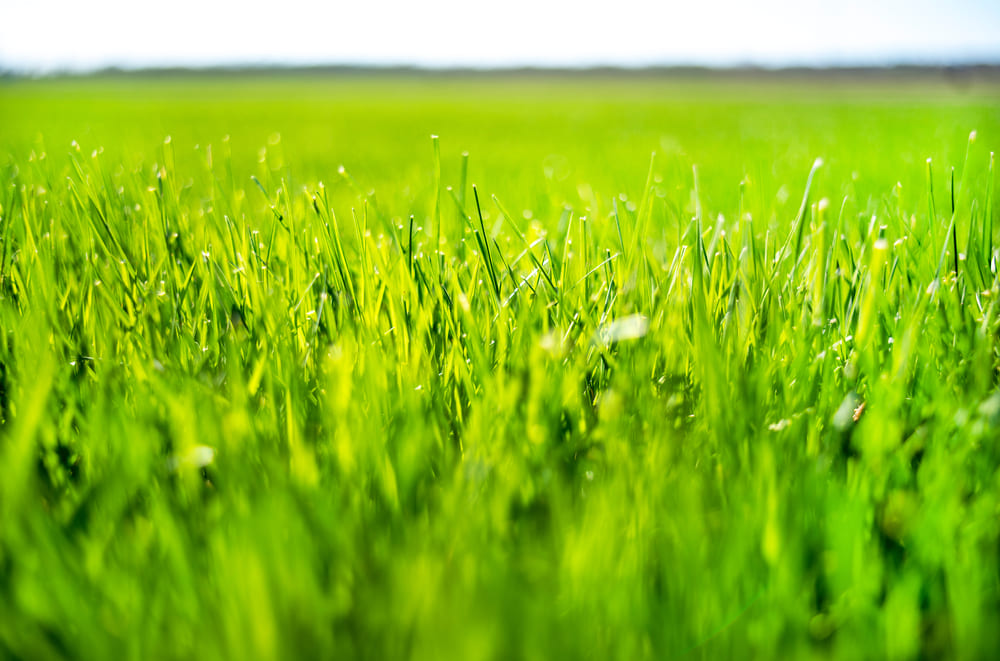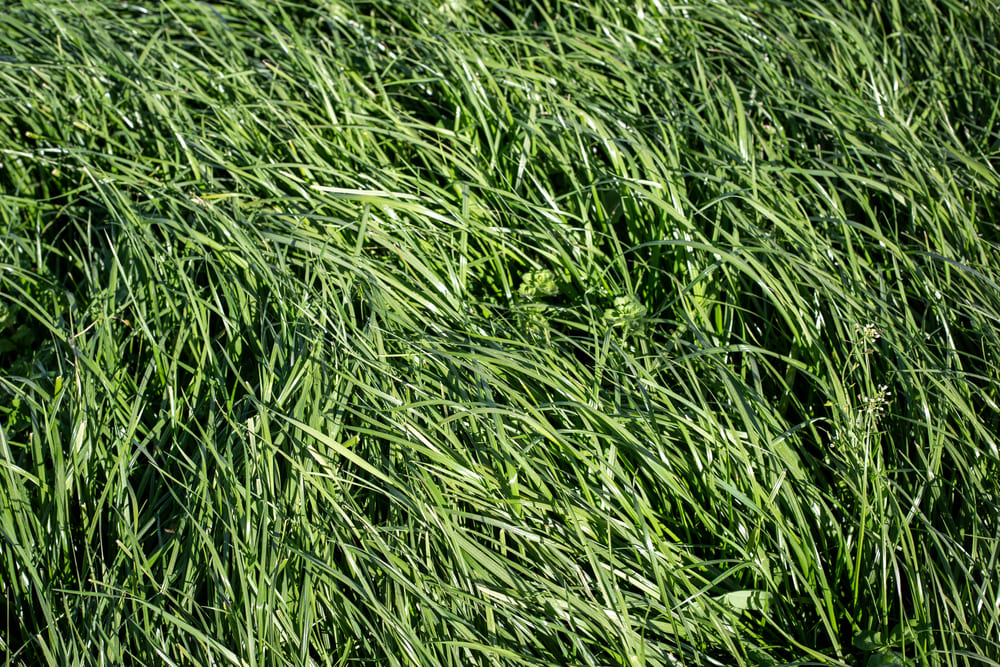Fescue is a popular cool-season grass that can thrive in Oklahoma’s climate and soil conditions. If you’re planning to plant fescue, it’s important to know the best time to do so. Spring planting is ideal for fescue as it allows the grass to establish its root system before the hot summer months.
Proper preparation of the planting area is crucial for successful fescue planting in Oklahoma. This includes conducting a soil test to determine any nutrient deficiencies or pH imbalances that need to be corrected before planting. Fertilization and weed control are also important steps in preparing the planting area.

Timing is everything. Planting too early in the fall can result in poor establishment due to warm soil temperatures, while late fall planting may not allow enough time for roots to develop before winter dormancy. Spring planting between mid-March and mid-April is generally recommended for optimal growth and establishment.
Best Grass Types to Grow in Oklahoma
Oklahoma’s climate is known for its hot summers and cooler months, making it essential to choose the right turfgrass species for your lawn. In this section, we will discuss the best grass types to grow in Oklahoma and their unique characteristics.
Bermuda Grass
Bermuda grass is a warm-season grass that thrives in Oklahoma’s climate. It is drought-tolerant and can withstand high temperatures, making it ideal for Oklahoma’s hot summers. Bermuda grass has a fine texture and is known for its dark green color. This type of grass requires full sun exposure to grow properly.
Zoysia Grass
Zoysia grass is another warm-season grass that can grow well in various soil types. It has a medium texture and is known for its resistance to pests and diseases. Zoysia grass requires less water compared to other warm-season grasses, making it an excellent choice for homeowners who want to conserve water.
Tall Fescue
Tall fescue is a cool-season grass that can tolerate shade and has a deep root system, making it ideal for Oklahoma’s cooler months. It has a coarse texture and comes in different shades of green. Tall fescue requires moderate watering and fertilization compared to other cool-season grasses.
Buffalo Grass
Buffalo grass is a low-maintenance warm-season grass that can tolerate drought conditions well. It has a fine texture and grows slowly, requiring less mowing than other types of turfgrass species. Buffalo grass may turn brown during periods of drought but will recover once moisture returns.
Centipede Grass
Centipede grass is another low-maintenance option that can thrive in Oklahoma’s climate. It has a medium texture and requires minimal fertilization compared to other turfgrass species. Centipede grass prefers acidic soil with good drainage but may struggle in heavy clay soils.
Kentucky Bluegrass
Kentucky bluegrass is a cool-season grass that has a fine texture and dark green color. It requires frequent watering and fertilization to maintain its appearance, making it more high-maintenance compared to other turfgrass species. Kentucky bluegrass prefers well-draining soil and full sun exposure.
Choosing the Right Grass Type
When choosing the right grass type for your lawn in Oklahoma, there are several factors to consider. These include:
- Climate: Consider the temperature range and rainfall patterns in your area.
- Soil Type: Different grass types have varying soil requirements.
- Maintenance Level: Some turfgrass species require more maintenance than others.
- Sun Exposure: Certain grass types require full sun exposure, while others can tolerate shade.
It’s essential to choose a grass type that can thrive in your specific climate and soil conditions while also fitting your maintenance needs.
Grass Types Suitable for Oklahoma’s Climate
Fescue Grass Seed: A Popular Choice for Oklahoma
Oklahoma is a state that experiences varied weather conditions throughout the year. The summers can be scorching hot, while the winters can be bitterly cold. Therefore, it’s essential to choose grass types that can withstand these extreme temperatures and thrive in Oklahoma’s soil types. Fescue grass seed is a popular choice for Oklahoma due to its ability to tolerate both hot summers and cold winters.
Soil Types Suitable for Fescue Grass Seed
Oklahoma’s soil types vary greatly, but fescue grass can grow well in soils with good drainage and a pH level between 6.0 and 7.0. If you are unsure about your soil type, you may consider getting it tested by a professional or using an at-home testing kit.
Hardiness Zones Suitable for Fescue Grass Types
Oklahoma falls within USDA hardiness zones 6a to 8a, which means fescue grass types suitable for these zones include tall fescue, fine fescue, and creeping red fescue. These varieties of fescue grass have different characteristics that make them suitable for different areas of your lawn.
Tall Fescue
Tall fescue is known for its deep roots that allow it to tolerate drought conditions better than other cool-season grasses. It also has a high tolerance for traffic and shade.
Fine Fescues
Fine fescues are known for their fine texture and ability to grow well in shady areas with poor soil quality. They require less water than other cool-season grasses.
Creeping Red Fescues
Creeping red fescues are known for their low-growing habit and ability to spread quickly through rhizomes. They are ideal for use as ground cover or erosion control on slopes.
Preparing Soil Surface before Planting Fescue Grass Seed
When planting fescue grass seed in Oklahoma, it’s important to prepare the soil surface by removing any debris and loosening the topsoil to a depth of at least six inches. This will help ensure that the roots can penetrate the soil easily and establish themselves firmly.
Air Temperatures for Planting Fescue Grass Seed
Air temperatures in Oklahoma can fluctuate greatly, but planting fescue grass seed during the cooler months of September through November can help ensure successful establishment. The cooler temperatures allow for better moisture retention in the soil, which is essential for seed germination.
Other Grass Types Suitable for Oklahoma
Apart from fescue grass types, there are other cool-season grasses suitable for Oklahoma’s climate. Kentucky bluegrass is a popular choice due to its ability to tolerate both heat and cold. It also has a fine texture and attractive appearance. Perennial ryegrass is another option that establishes quickly and has good wear tolerance.
Ideal Conditions for Fescue Germination and Establishment in Oklahoma
Fescue is a cool-season grass that is commonly grown in Oklahoma. It is an excellent choice for lawns, parks, golf courses, and other recreational areas. However, to ensure successful fescue establishment, it is important to understand the ideal conditions required for seed germination and growth.
Soil Conditions
The first step in achieving successful fescue establishment is to prepare the soil properly. Ideal soil conditions for fescue germination and establishment in Oklahoma include well-draining soil with a pH level between 6.0 to 7.0. Soil that is too acidic or alkaline can inhibit seed germination and growth.
Moisture Conditions
Moisture conditions are crucial for rapid germination of fescue seeds. The seedbed should be kept moist but not waterlogged during the germination period. If the soil becomes too dry, it can cause poor seed-to-soil contact and reduce germination.
Soil Temperatures
Soil temperatures play a critical role in determining when to plant fescue seeds in Oklahoma. Fescue seeds require soil temperatures between 50 to 65 degrees Fahrenheit for optimal germination rates. Seeding should be done at least six weeks before the first frost date in Oklahoma to allow enough time for establishment before winter.
Best Seed Planting Dates
The best seed planting dates for fescue in Oklahoma are between late August to early October. This timing allows enough time for establishment before winter sets in while avoiding extreme heat stress on young plants during summer months.
Seedbed Preparation
To ensure good percent germination of fescue seeds, it is important to prepare the seedbed properly by removing debris and loosening the soil before seeding. This will help create an ideal environment for root development and improve seed-to-soil contact.
Tamping Soil
After seeding, it is recommended to tamp soil lightly to ensure good seed-to-soil contact, which aids in establishment. This is especially important for larger seeds like fescue, as they require more pressure to establish properly.

Watering Tips for a Healthy Fescue Lawn in Oklahoma
A lush, green lawn is the pride of any homeowner. But achieving and maintaining a healthy fescue lawn in Oklahoma can be challenging, especially including disease, pests, and poor growth. In this section, we’ll explore some watering tips that will help you keep your fescue lawn healthy and vibrant.
Light Irrigations are Key
One of the most common mistakes homeowners make is that too much water can actually harm your grass by causing waterlogging and root rot. To avoid this problem, it’s recommended that you water your fescue lawn with light irrigations rather than heavy soakings.
The Recommended Amount of Water
So how much water does your fescue lawn need? The answer depends on several factors, including the weather conditions and the type of soil in your yard. As a general rule of thumb, though, most experts recommend giving your lawn around 1 inch of water per week (including rainfall) for optimal health.
Check Soil Moisture Level Regularly
To determine if your lawn needs watering or not yet, check the soil moisture level regularly by inserting a screwdriver or soil probe into the ground. If it goes in easily without resistance from dry soil particles clinging onto it then you don’t need to water yet; however if there’s resistance then you should give more water as required.
Timing is Everything
When you do decide to water your fescue lawn, timing is everything. It’s best to do so early in the morning or late afternoon when temperatures are cooler and evaporation rates are lower. This ensures that the water reaches the roots where it’s needed most rather than evaporating into thin air before reaching the roots.
Other Watering Tips
In addition to the tips mentioned above, there are a few other things you can do to ensure your fescue lawn stays healthy and hydrated:
Achieving a Beautiful Fescue Lawn in Oklahoma
In conclusion, growing a beautiful fescue lawn in Oklahoma requires careful consideration of the grass type, climate conditions, and proper maintenance techniques. Tall fescue grass is an excellent choice for homeowners who want a lush green lawn that can withstand the harsh summers and winters of Oklahoma.
The best time is during late September when temperatures cool down, and there’s less wind. This period allows the grass to establish strong roots before the first fall frost arrives. It’s also essential to prepare the soil properly by removing any weeds or debris and ensuring that it’s well-drained.
Sprigging or seeding are both viable options for planting tall fescues. Seeding requires less effort but takes longer to reach full coverage than sprigging. Regardless of which method you choose, make sure to follow the recommended seeding rate per square feet for optimal performance.
Once your fescue lawn is established, proper mowing and fertilization are crucial for maintaining its health and beauty. Mow your lawn regularly at a height of 2-3 inches to prevent seed heads from forming and encourage lateral growth. Fertilize your lawn with nitrogen-rich fertilizer in early spring and late fall for optimal growth.
Watering is another critical factor in maintaining a healthy fescue lawn in Oklahoma. Water deeply once or twice a week instead of frequent shallow watering to encourage deep root growth. Avoid watering during windy periods as this can cause water loss through evaporation.
